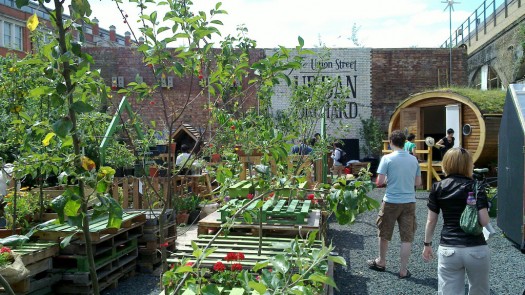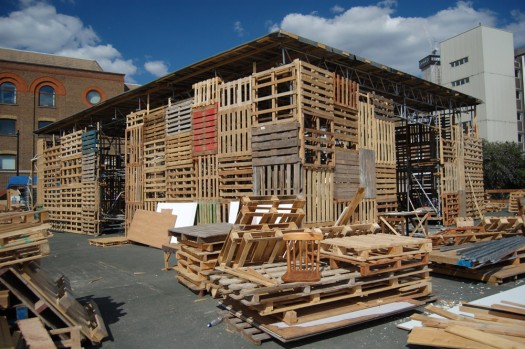
We are celebrating 15 years — and counting — of stories that are deeply researched and deeply felt, that build a historical record of what the city has been.
We are celebrating 15 years — and counting — of stories that are deeply researched and deeply felt, that build a historical record of what the city has been.
How do you create a context for good architectural work to be conceived and communicated, understood and valued, designed and built? The Architectural League of New York has been asking and answering this question since its founding in 1881, through lectures, design studies, symposia, exhibitions, prizes, publications and websites (like the one you are reading right now). The London-based Architecture Foundation (AF) has a shorter history — it was founded as the United Kingdom’s first independent architecture center in 1991 — but no less ambitious a mission: to “cultivate new talent and ideas” in architecture and urbanism. One of the many ways the Architecture Foundation does this is by helping to curate and produce the London Festival of Architecture (LFA), a biannual event that celebrates new design ideas in and for London. For its fourth incarnation in 2010, over 600 events, exhibitions, installations and tours responded to this year’s theme of “The Welcoming City.” Since Urban Omnibus is all about celebrating new design ideas in and for New York, we were curious to hear directly from some of the organizers about how to go about such an endeavor in the festival format. We were particularly interested in strategies to invite the public into a shared sense of transformative possibility about the built environment. So we caught up with Sarah Ichioka, director of the Architecture Foundation and co-director of the London Festival of Architecture, and Moira Lascelles, a consultant curator for the 2010 Festival. Read what they had to say about it below.
What is the London Festival of Architecture and how did it come about?
The London Festival of Architecture (LFA) is a citywide celebration of architecture in London. It consists of a series of installations, exhibitions and events that tackle key issues relating to architecture and the built environment today. The aim is to be as inclusive as possible and to bring awareness of the profession to a wide public.
The Festival originated in 2004 as the London Architecture Biennale and was focused in the Clerkenwell area of London – a neighborhood characterized by the large number of architecture and design firms based there. Since then, the Festival has grown and changed its name to appeal to an broad audience that extends beyond the professional design community.
The Festival has three core funders, two governmental (Arts Council England and the London Development Agency) and one private sector (Land Securities, a large property company). While core funding covers key central costs like our website, and some central project management salaries (the four LFA Directors all donate their time), the majority of Festival costs are met through individuals’ and firms’ in-kind support, through donation of labor, facilities, etc. There is a tangible spirit of enthusiastic volunteerism that really makes it happen each time.
How does the Festival’s stated connection to its local contexts play out, at the scale of the city and the scale of neighborhoods?
The Festival tends to focus on key areas, or ‘hubs,’ of London. These ‘hubs’ tend to be places that are experiencing a period of change or have projects or initiatives of architectural significance that the LFA feels are useful and relevant to highlight to a public audience. Curated core activities of the Festival are then located in these focus hubs.
In the past the Festival has focused on areas such as Canary Wharf, Kings Cross, Southwark and most recently the High Street 2012 area in East London and the Bankside Urban Forest in South London. Additionally, we actively encourage, and are incredibly grateful to, independent event organizers who stage events right across London allowing the Festival to be truly citywide. In the past, LFA events have been staged in Hammersmith, Barking, Croydon and Kilburn, to name only a few.

The Union Street Urban Orchard, designed by Heather Ring of the Wayward Plant Registry, has been employing the help of the local community and enthusiastic volunteers to regenerate this currently disused space. This collaborative project developed by The Architecture Foundation, Bankside Open Spaces Trust, ProjectARKs and the Wayward Plant Registry will run until 19 September. Photo (above): flickr user Jack999. Photo (below): James Nash
Can you describe briefly two or three of the projects that the Architecture Foundation brought to the Festival and why?
The Architecture Foundation was responsible for delivering a wide range of events for the 2010 London Festival of Architecture, including the International Architecture Student Festival and the International Architecture Showcase. For the student festival, in collaboration with London Metropolitan University, the AF asked students from around the world to create site-specific installations to act as sign-posts for the LFA. For the showcase, the AF collaborated with the British Council to turn more than 30 international embassies and cultural institutes around London into presenting venues for a series of exhibitions, installations, events and talks programmes to highlight the dynamic architectural projects that are emerging from their respective countries and to address the theme of the ‘The Welcoming City.’
Both these initiatives reinforce two of The Architecture Foundation’s key aims: exploring international links and collaborations with overseas partners and nurturing new and emerging talent.
The AF also aims to influence the quality of the built environment through real-time, 1:1 scale engagement with stakeholders, and through the fostering of productive interdisciplinary dialogue. For example, the Architecture Foundation staged two large scale interventions in South London, one of which was the building of an urban orchard and community garden complete with 85 trees. Taking its cue from Witherford Watson Mann’s vision for the Bankside Urban Forest in South London, this installation creates a place of exchange for local Bankside residents and visitors to the Festival. The Union Street Urban Orchard lasts until September 19th, after which time all the trees and plants will be redistributed around the local community greening estates and existing community gardens.
Another intervention that reflects this spirit of engagement and dialogue is the Oikos Project, a 120-seater theater built entirely out of locally-sourced, salvaged materials. It’s still under construction. This project was designed by the Berlin-based architect Martin Kaltwasser, and produced in collaboration with the political theater company the Red Room.

The Jelly Fish Theatre, designed by Berlin based architects Köbberling and Kaltwasser, is the UK’s first fully-functioning theatre made entirely from recycled and reclaimed materials. Photo (above): Maja Mysliborska. Photo (below): The Oikos Project
Why do you think large-scale events such as this are important for cities?
These installations allow a broad public to interact with architecture and consider, in a very direct manner, changes — whether underway or yet to be initiated — to their local environment. It brings to life a subject that can at times seem intimidating or inaccessible.
In addition, temporary projects created in the spirit of a Festival can act as testbeds for longer-term strategies and solutions to a given problem. The ‘temporary state’ of these installations encourages people to allow activities to happen that they may usually deem to be too risky or expensive. Once they see how they work on a short-term basis they have more courage in pursuing longer term strategies.
Are there other comparable events taking place in London?
We are definitely the most comprehensive event of this sort in the UK, in terms of both geographic coverage and temporal length. For example, Open House London, a really great event that happens one weekend each autumn, is about getting people special access to see the inside of existing buildings. The Festival, in contrast or complement to this, is about creating new visions of how the city might be, whether this is through exhibition, debates, or full-scale interventions within the public realm.
In your opinion, to what extent does the Festival invite Londoners to share a sense of transformative possibility about the built environment?
Due to the wide variety of Festival events there is something for everyone! People can be affected on any number of different scales, from a debate or an exhibition to a transformative experience through an installation. The Festival makes these events and encounters possible.
What do you think are some ways that sense might be maintained after the event is over?
Legacy has been a key word for the LFA2010 and many of our projects have sought to plan for a longer life beyond the Festival closing date of July 4th. Two strong examples of this are The Union Street Urban Orchard, mentioned above, along with the Oikos Project, which saw the live build of a theater from recycled and reclaimed materials that will house specially commissioned plays on climate change in the autumn. The idea of legacy was also written into the International Architecture Student Festival Brief encouraging students to find local clients and building useful objects that could last. Our hope is that this aspect of the Festival will continue to grow in years to come.
The views expressed here are those of the authors only and do not reflect the position of The Architectural League of New York.